
Slurping delicious noodles in a savory broth in one of the thousands of ramen shops across Japan is a quintessential Japanese culinary experience not to be missed. While each region has its own variation, there are four main styles of ramen that you will find at almost any ramen shop in Japan and around the world. Shio ramen is one of the four main types of ramen.
Shio ramen is known for its lighter broth and salty flavor. Whether you’re a seasoned ramen connoisseur or you are new to the world of ramen beyond the instant soups sold in grocery stores, shio ramen will not disappoint.
In this article we will take you step-by-step through how to prepare this savory soup.
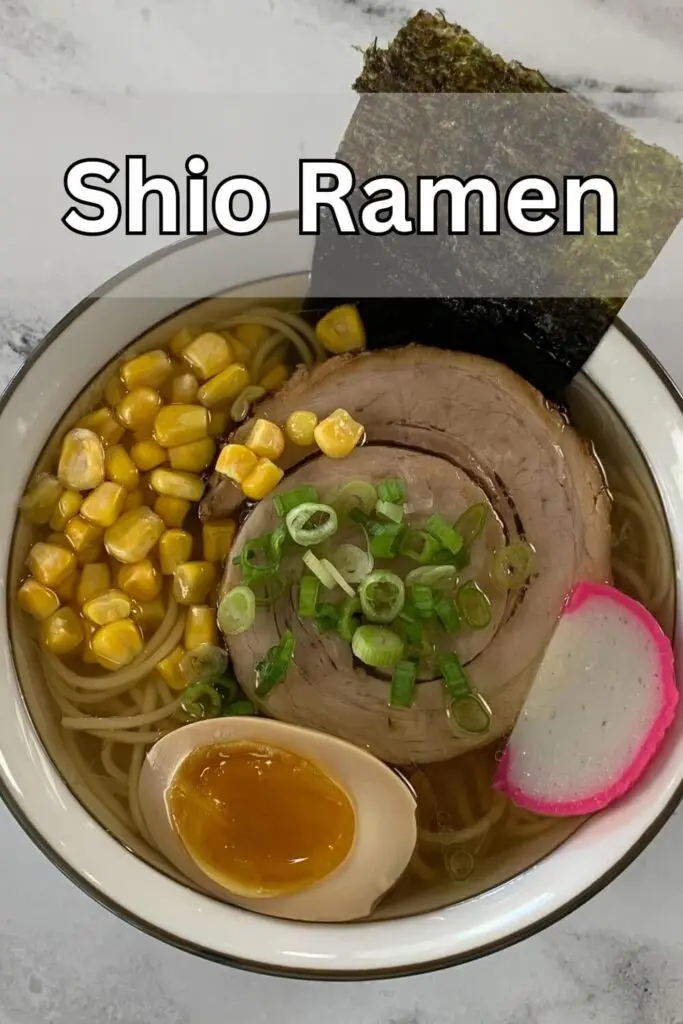
Table of Contents
What is Shio Ramen?
Ramen is a noodle based soup that was first introduced to Japan by the Chinese in the late 19th and early 20th centuries. Since being introduced however, it evolved into something distinctly Japanese using a variety of Japanese ingredients and cooking methods. In the 1980’s ramen grew in popularity both in and outside of Japan.
Today, the complexities of the various styles of ramen are more appreciated than ever. While ramen restaurants still serve quick and typically inexpensive meals, ramen chefs continue to innovate taking ramen to new levels. In fact, Tokyo is home to two Michelin rated ramen restaurants.
As mentioned before, there are four main types of ramen that you are likely to find in most ramen shops across Japan and around the world. These are shio ramen, shoyu ramen, miso ramen and tonkotsu ramen. What differentiates the different styles of ramen is largely the type of broth used and the tare (or sauce) used to flavor the ramen.
Shio ramen is known for its light, salty broth that is comprised of chicken stock and dashi. As shio translates to “salt,” salt is a primary ingredient in the shio tare that is added to the broth and gives the ramen its defining flavor.
Where is Shio Ramen Popular?
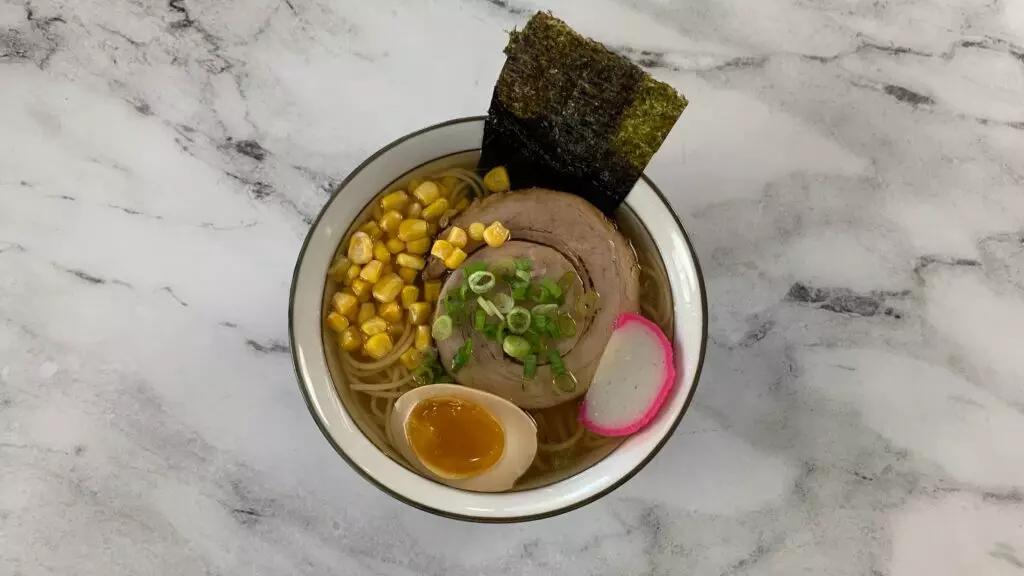
Shio ramen is widely believed to have originated in the city of Hakodate, a city in Japan’s northern island of Hokkaido. However, today shio ramen is popular throughout Japan and the world alike.
Components of Shio Ramen
What many newbies to ramen don’t know is that ramen consists of 5 components that are prepared separately and added individually to each bowl. Those components are the broth, the tare (or sauce that gives the ramen its flavor and identity), the aromatic oil, the noodles, and the toppings. If you want to understand ramen and what differentiates the different styles of ramen, you have to understand these five components. Below we discuss what these components look like in shio ramen.
Broth
The broth is by far the most time consuming component of ramen to make, with some broth’s taking days to prepare. If you go to a ramen shop, you will always notice several vats of broth in various stages of soaking or simmering.
Shio ramen has a lighter broth that is composed of chicken stock and dashi. If you have the time, you can make your own chicken broth or stock from chicken bones. This definitely does give you a superior product and base for your broth than using store bought chicken broth or stock. However, it is very time consuming. Unless I have some chicken broth or stock already made and in the freezer, I usually opt for the store bought version purely to save time.
On the other hand, I do usually make dashi from scratch provided I have the ingredients as it’s much less time consuming to prepare than chicken broth. They do have instant dashi packets that you can use as well if you are in a time crunch or run out of dashi when you are in the middle of your batch.
A typical bowl of ramen has about 1 1/4 cups of broth, depending on the size of the bowl.
Tare

Tare means “sauce” in Japanese and gives each type of ramen its specific flavor. Shio tare has a high concentration of salt compared to other types of tare. It also contains dashi, sake, mirin, rice vinegar, and a little bit of sugar which combined give shio ramen umami punch of flavor.
A bowl of shio ramen contains about two tablespoons of this tare.
Aromatic oil/fat
An often overlooked but essential component to ramen is the oil or fat component. Many recipes combine this into the tare. However, I like to keep the fat and tare separate to assure you get right proportions of each in your bowl of ramen.
In shio ramen I like to use pork lard and sesame oil as the base for my aromatic oils. I like to use pork lard as I think it complements the meaty flavor of the chicken broth well. However, if you don’t have pork lard, vegetable oil will also work.
I then roast minced garlic and grated ginger into the oils to infuse their flavor throughout the oil. Once done roasting, I strain the oil into a small bowl.
I add one tablespoon of this aromatic oil to my bowl of broth and tare prior to adding the noodles.
Noodles
Shio ramen often uses straight noodles but any type of ramen noodles will do. When in a pinch, I sometimes use the noodles out of the instant ramen packs. Of course, this will not be as good as if you made your own noodles fresh but it’s definitely quicker and gets the job done.
As with all ramens, be sure to strain your noodles well prior to adding to the bowl as excess water can dilute your broth and impact the flavor of your ramen.
Toppings
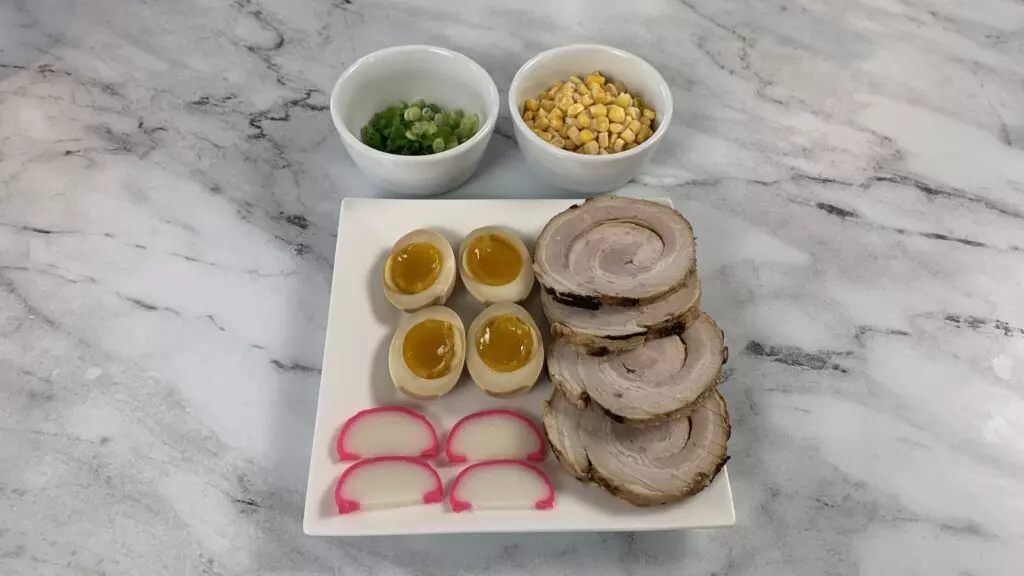
The toppings of a ramen bowl give a cook a chance to differentiate the ramen and truly make it his or her own. When I make shio ramen, I typically add the following toppings to each bowl: a slice of chashu pork, one or two halves of a ramen egg, a couple tablespoons of corn, a slice of kamaboko (or fish cake), a pinch of diced scallions, and a couple strips of nori. If you can find them, pickled bamboo shoots (or menma) is also a tasty topping that goes well with the light broth of a shio ramen.
Some people add chashu chicken instead of the slice of chashu pork in more contemporary versions of shio ramen. However, chashu chicken is not a traditional Japanese dish but rather was invented in the West. That being said, chashu chicken is a delicious addition to this dish as well.
Check out the following article for a great chashu pork recipe and video: Authentic Chashu Pork: Step-by-Step Instructions
How to Make Shio Ramen
Prepare broth
1. Combine 4 cups of chicken broth and 3 cups of dashi in a pot over low heat and bring to a simmer.
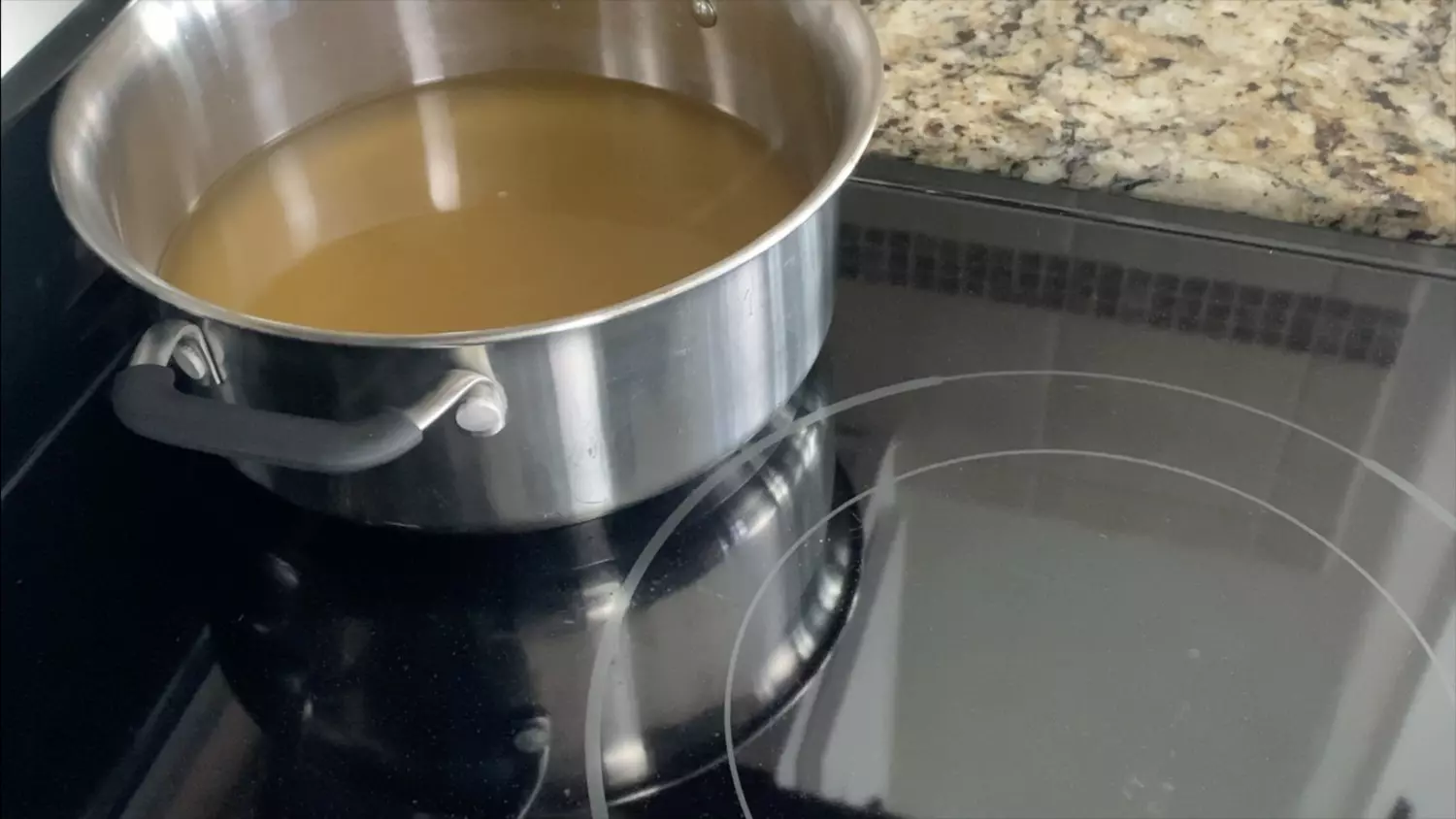
Prepare shio tare
1. Combine all the shio tare ingredients in a sauce pan and slowly bring to a simmer over low-medium heat.
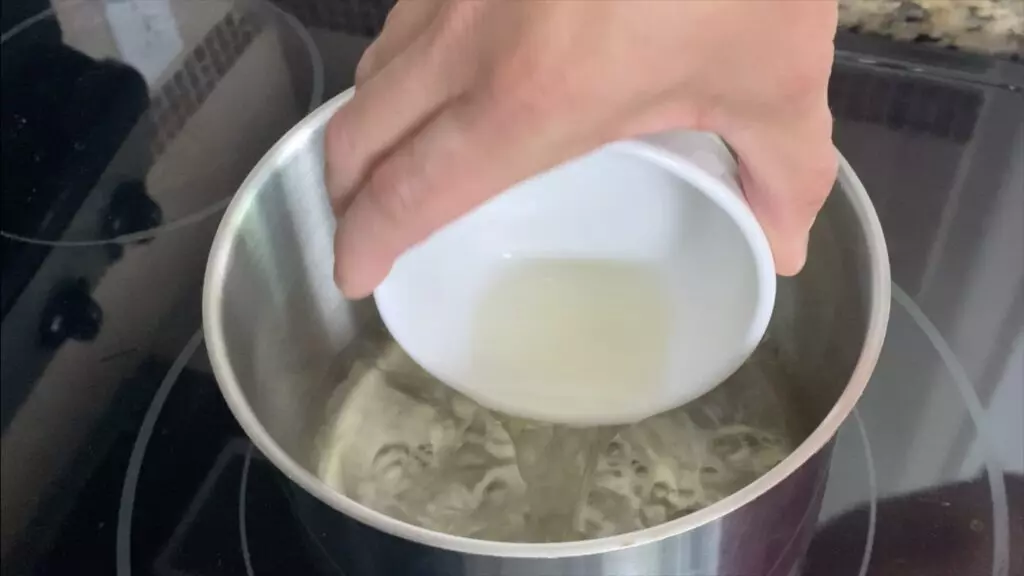
2. While waiting for the mixture to simmer, stir to make sure salt is dissolved. Also, stir the mix occasionally after the salt is dissolved.
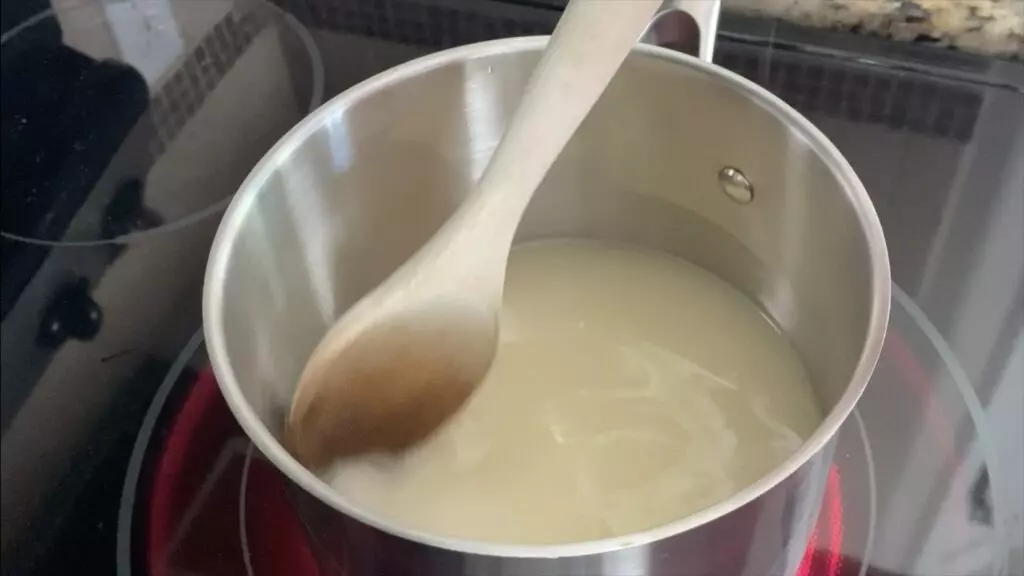
3. Once the mixture is boiling, reduce heat and simmer for 5 minutes.
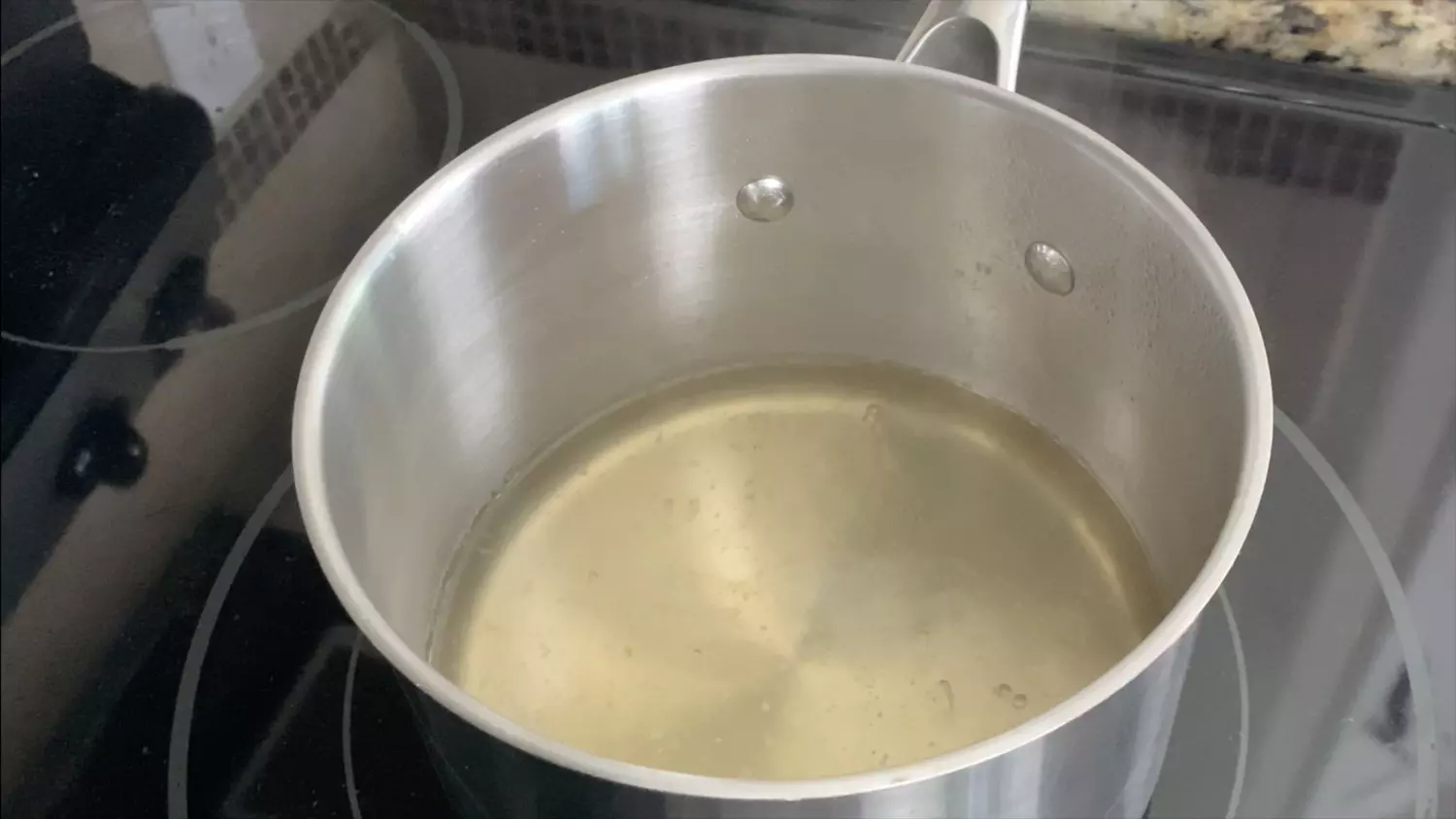
4. After 5 minutes remove from heat and let cool.
Prepare aromatic oil
1. In a small sauce pan, heat pork lard and sesame oil on medium-low heat until hot.
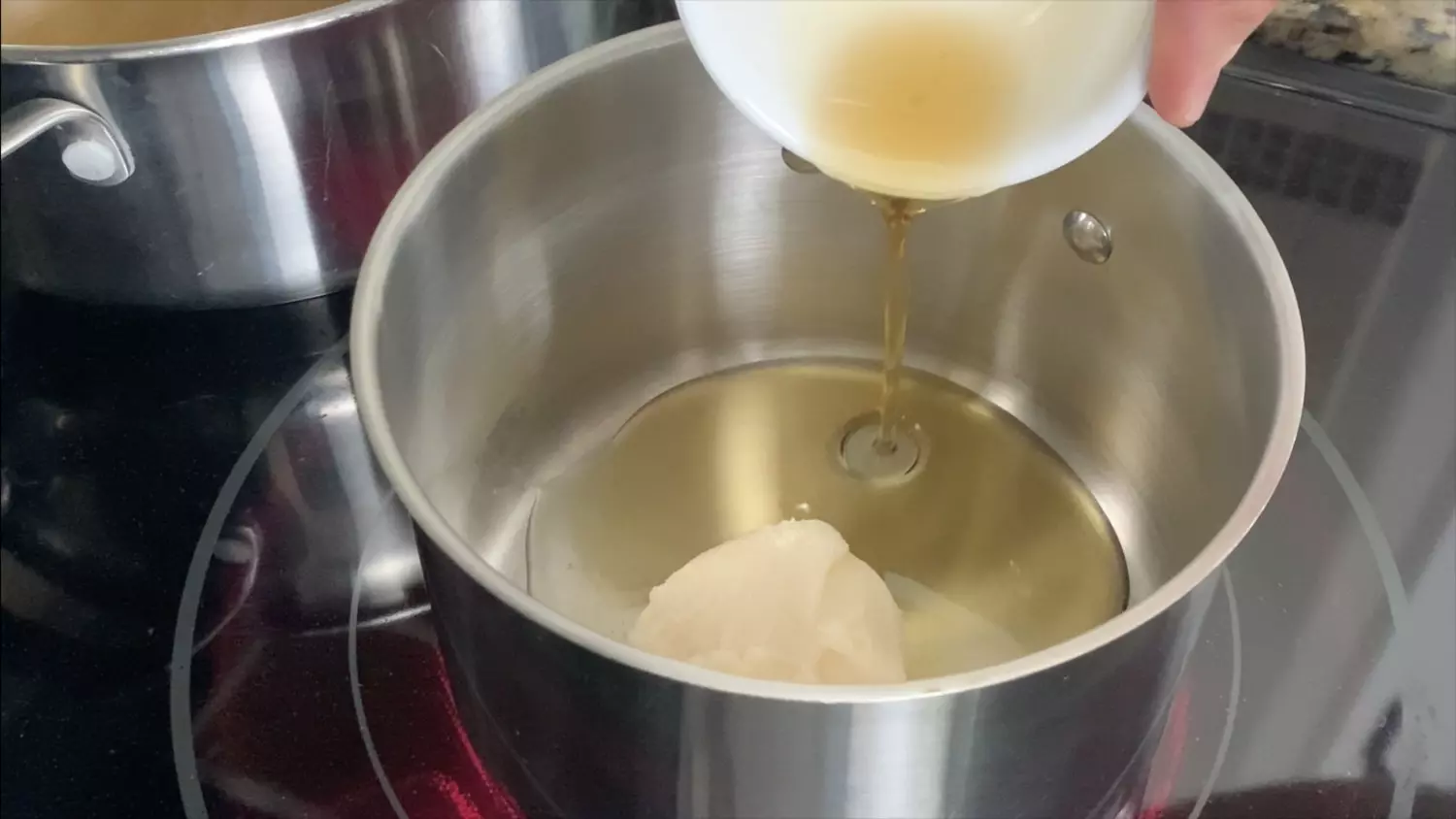
2. Add minced garlic and grated ginger to oils and cook for 1-2 minutes or until browned and releasing aromas. Stir frequently and make sure not to let the aromatics burn.
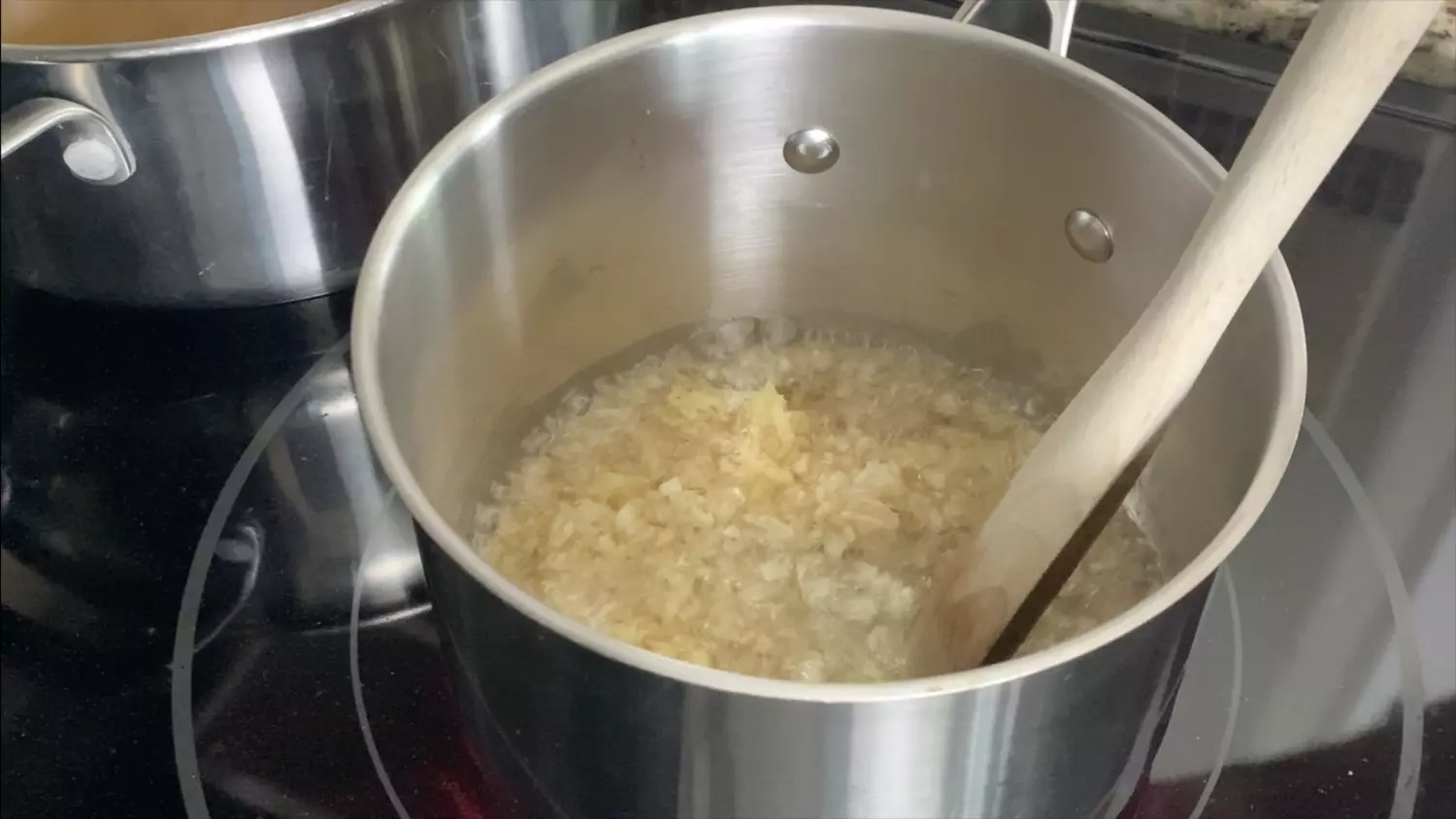
3. Remove from heat and let cool.
4. Once cool, strain oil into small bowl.
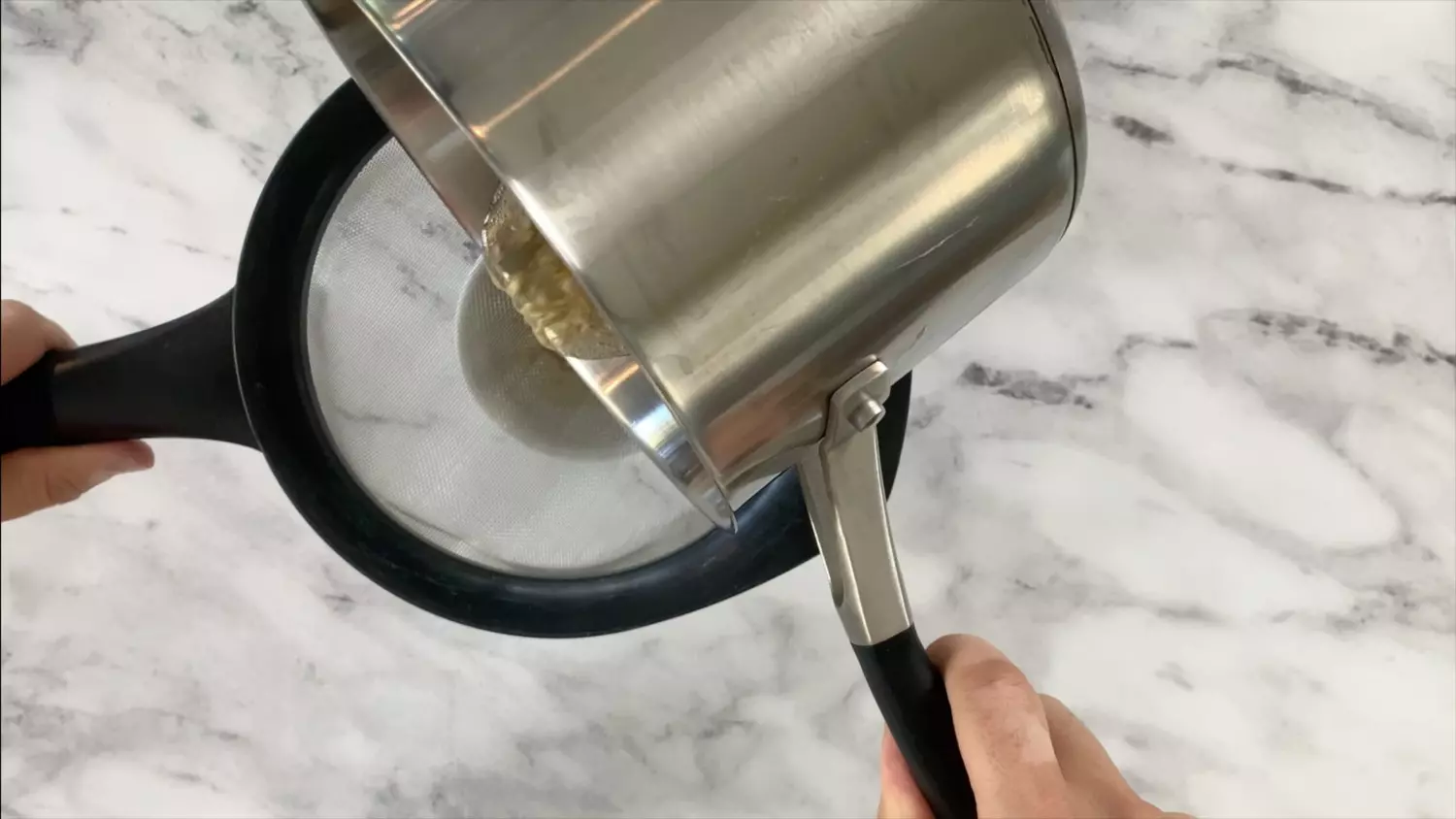
Prepare the toppings
1. Cut four slices about 1/4 inch thick off of the chashu pork. Heat each slice of chashu by heating in a skillet with its cooking liquids.
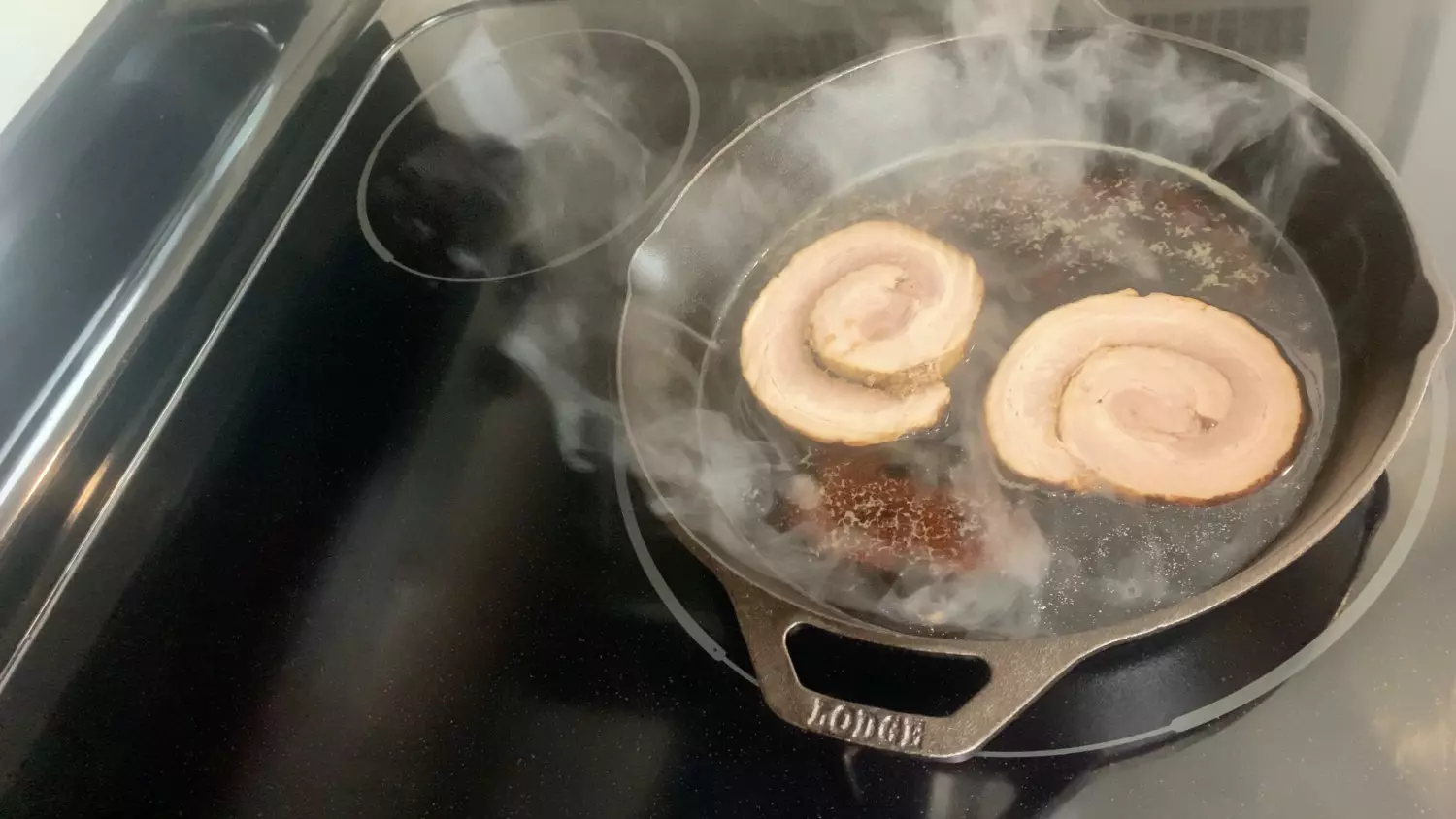
2. Assemble remaining topping ingredients so they can be added to the soup quickly.
3. Cut ramen eggs in half. Also, cut nori sheet into strips.
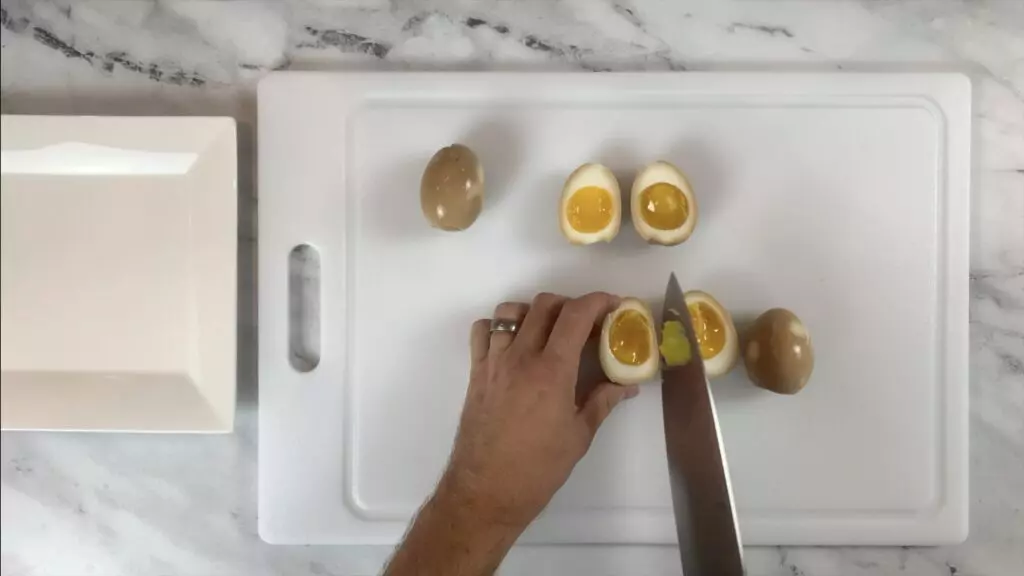
Cook noodles and assemble soup
1. Follow the instructions on the noodles to cook noodles in boiling water.
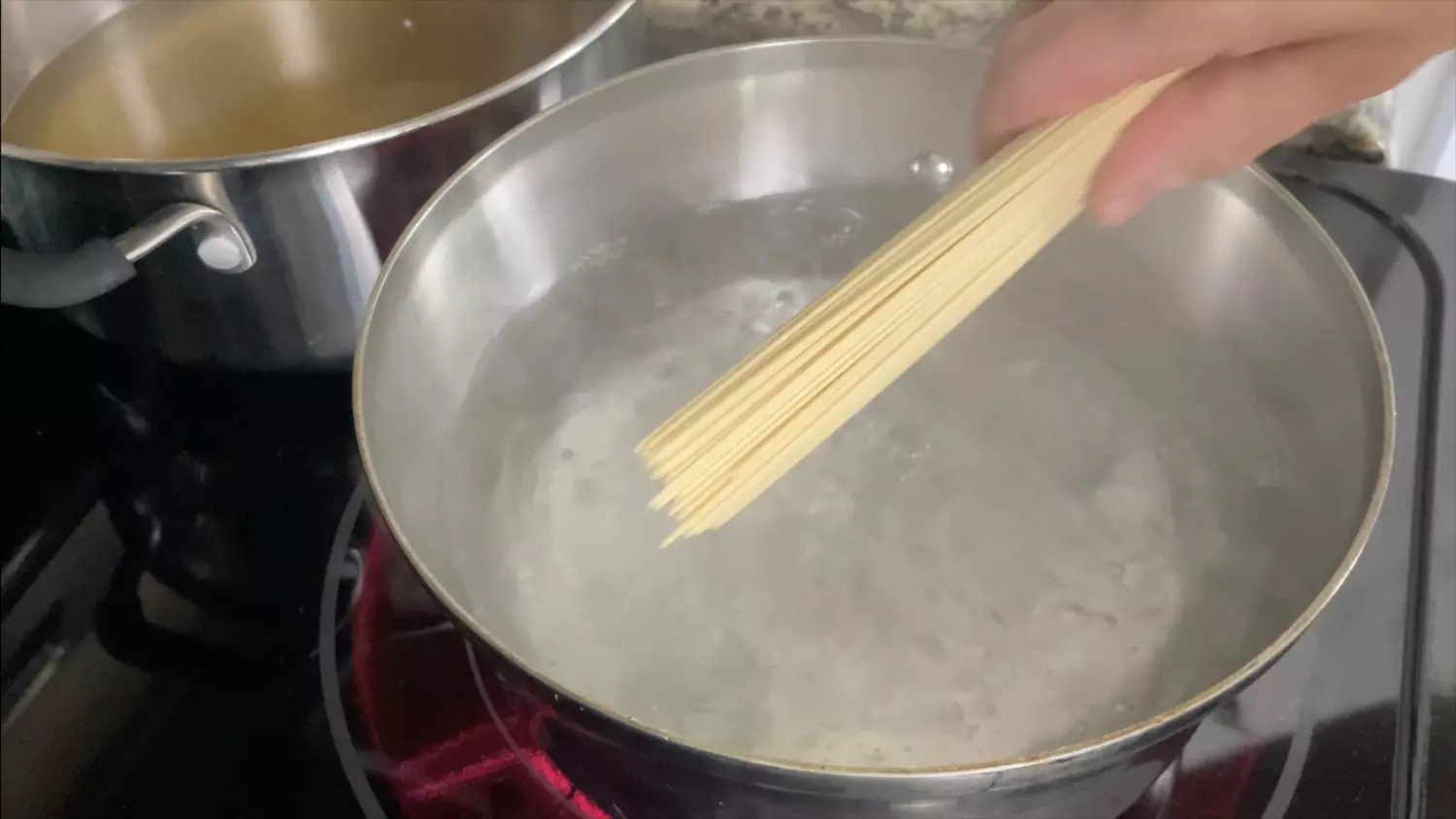
2. While the noodles are cooking, place 1 1/4 cups of the broth into a bowl. Add 2 tablespoons of the shio tare and 1 tablespoon of the aromatic oil. If needed, stir in tare as needed to make sure it is combined with the broth.
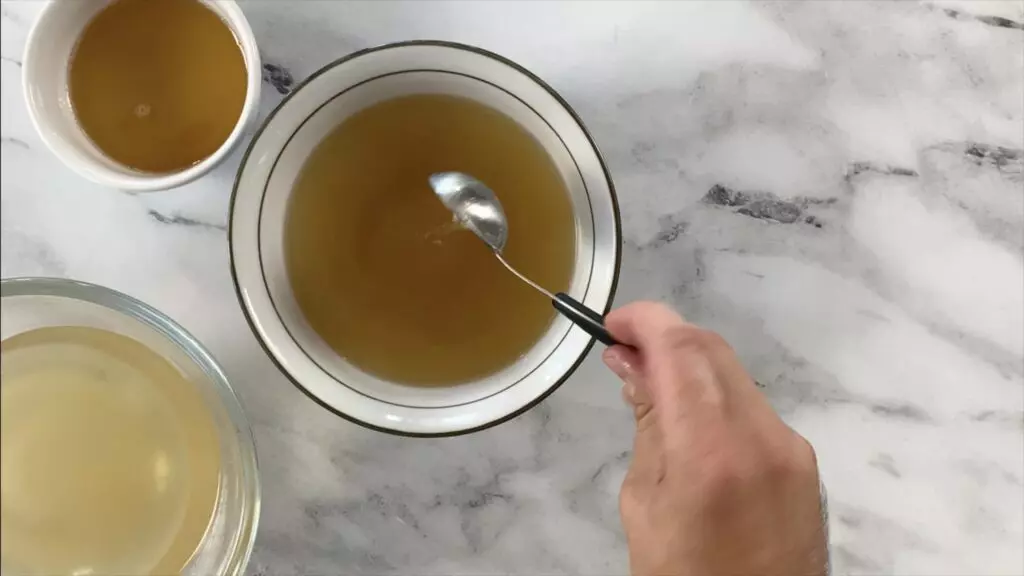
3. Once noodles are done cooking, strain thoroughly making sure to get rid of as much water from the noodles as possible as the water can dilute the broth. Once strained, add an individual portion of noodles to the bowl with the broth.
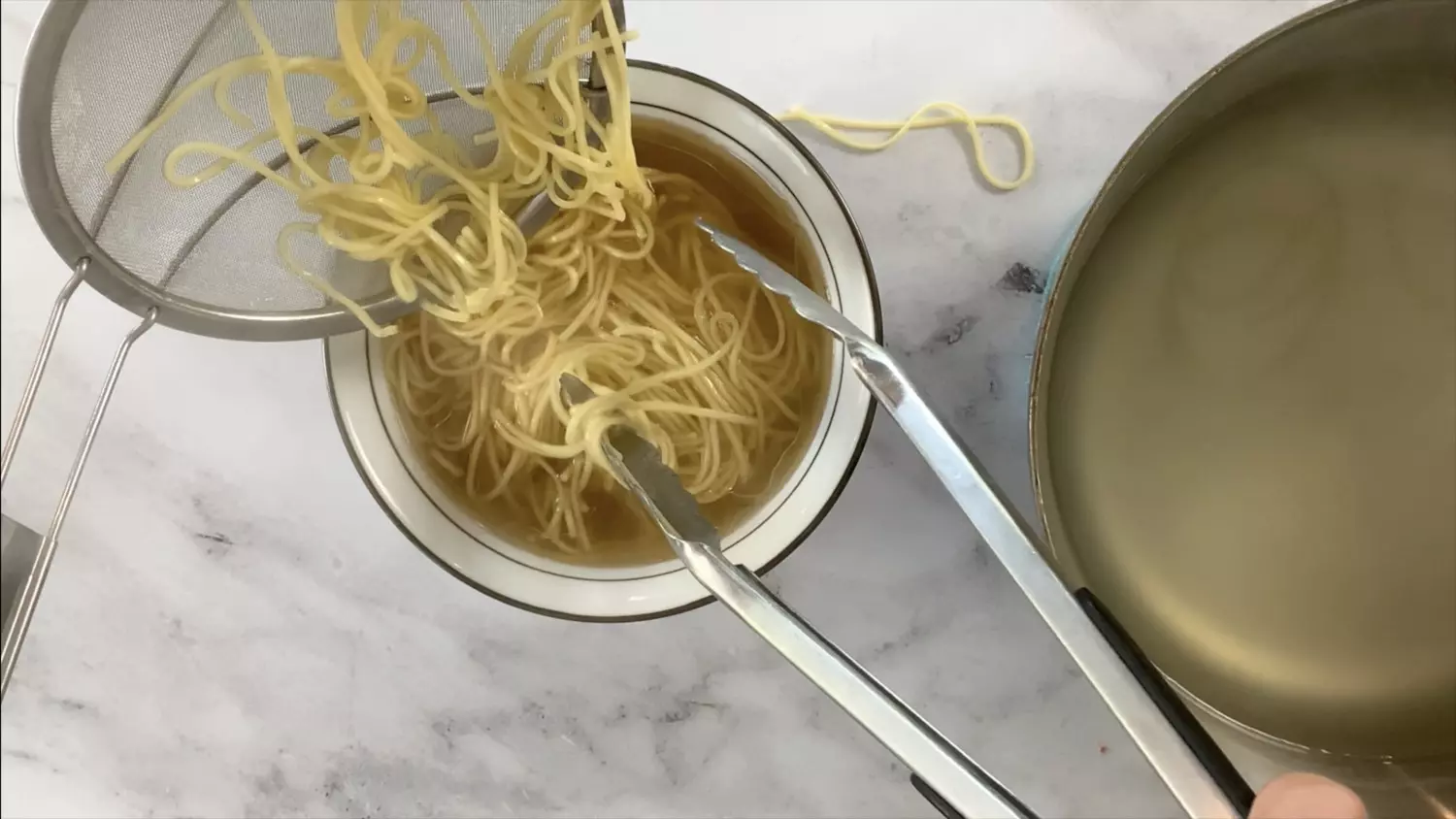
4. Add a chashu pork slice to the bowl of ramen.
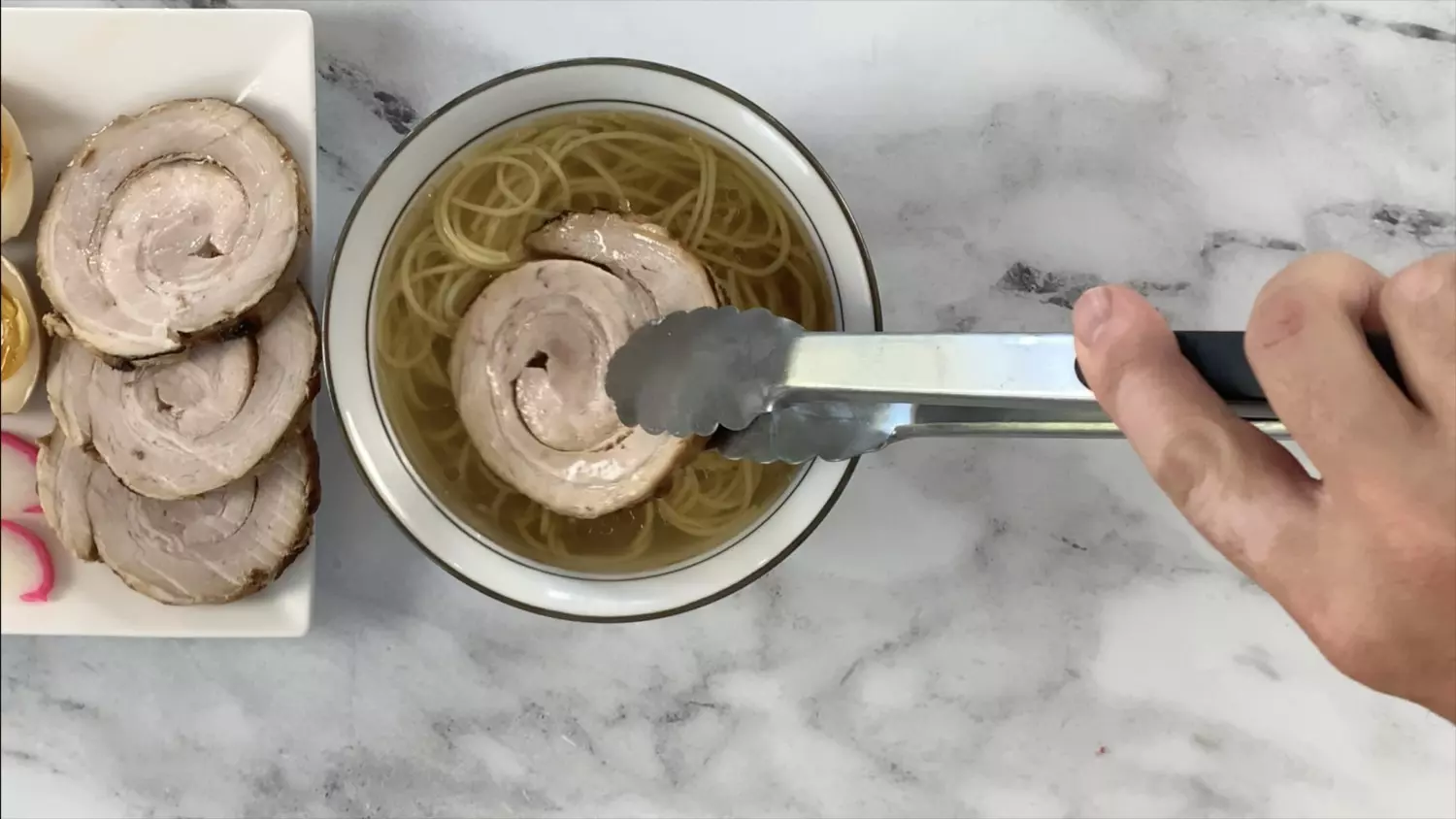
5. Place half of a ramen egg in the broth with the yolk facing up.
6. Fold the nori strip in half and add to the bowl. Also, add a slice of kamaboko (narutomaki is a common type of kamaboko used in ramen), 1/4 of the scallions, and 2 tablespoons of corn to the bowl.

7. Serve and enjoy!
Shio Ramen Recipe
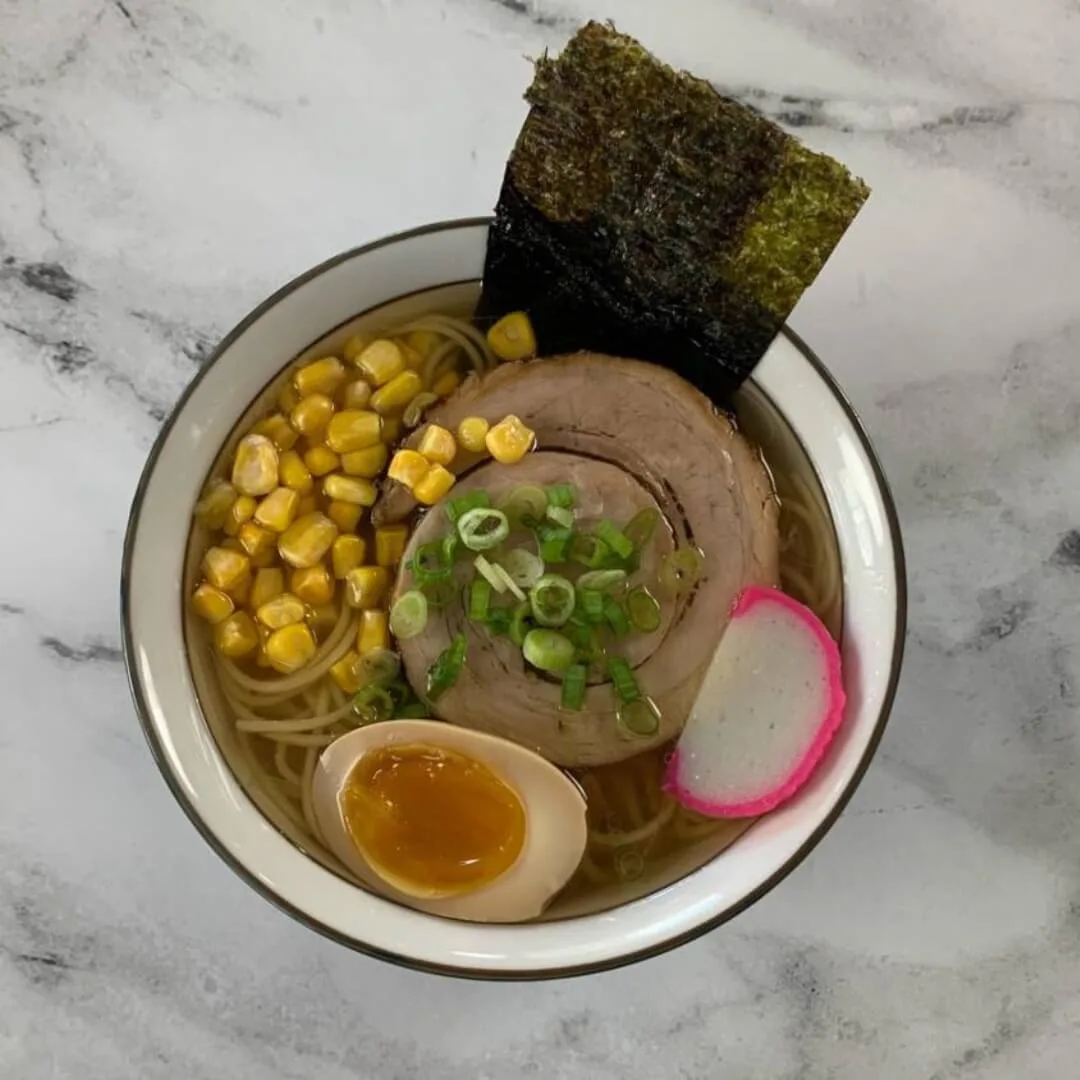
Shio Ramen Recipe
Equipment
- 1 Pot for broth
- 1 Sauce pot
- 1 Skillet
Ingredients
Broth
- 4 cups Chicken stock
- 3 cups Dashi
Shio Tare
- 1 cup Dashi
- 1/3 cup Mirin
- 1/4 cup Sake
- 1/3 cup Salt
- 1 Tbsp. Sugar
- 1 Tbsp. Rice vinegar
Aromatic oil
- 2 Tbsp. Ginger freshly grated
- 6 cloves Garlic minced
- 2 Tbsp. Sesame oil
- 1/4 cup Pork lard
Noodles, tare and toppings
- 4 Servings Ramen noodles 90 grams dry noodles
- 4 slices Chashu Pork
- 4 slices Kamaboko (narutomaki)
- 2 Ramen eggs (Ajitsuke tamago)
- 1 Nori sheet Cut into 8 even pieces
- 2 Scallions diced
- 1 cup corn
Instructions
Prepare broth
- Heat 4 cups of chicken broth and 3 cups of dashi in a pot over low heat and bring to a simmer.
Prepare shio tare
- Combine all the shio tare ingredients in a sauce pan and slowly bring to a simmer over medium-low heat.
- While waiting for the mixture to simmer, stir to make sure salt is dissolved. Also, stir the mix occasionally after the salt is dissolved.
- Once mixture comes to a boil, reduce heat and simmer for 5 minutes.
- After 5 minutes remove from heat and let cool.
Prepare aromatic oil
- In a small sauce pan, heat pork lard and sesame oil on medium-low heat until hot.
- Add minced garlic and grated ginger to oils and cook for 1-2 minutes or until browned and releasing aromas. Stri frequently and make sure not to let the aromatics burn.
- Remove from heat and let cool.
- Once cool, strain oil into small bowl
Prepare the toppings
- Cut four slices about 1/4 inch thick off of the chashu pork. Heat each slice of chashu by heating in a skillet with its cooking liquids.
- Assemble remaining topping ingredients so they can be added to the soup quickly.
- Cut ramen eggs in half. Also, cut the nori sheet into strips.
Cook noodles and assemble soup
- Follow the instructions on the noodles to cook noodles in boiling water.
- While the noodles are cooking, place 1 1/4 cups of the broth into a bowl. Add 2 tablespoons of the shio tare and 1 tablespoon of the aromatic oil. If necessary, stir in tare as needed to make sure it's combined with the broth.
- Once noodles are done cooking, strain thoroughly making sure to get rid of as much water from the noodles as possible as excess water can dilute the broth. Once strained, add an individual portion of noodles to the bowl with the broth.
- Add a chashu slice to the bowl of ramen.
- Place half of a ramen egg in the broth with the yolk facing up.
- Also, add a slice of kamaboko (most commonly used type of kamaboko in ramen is narutomaki), 1/4 of the scallions, and 2 tablespoons of corn to the bowl. Fold your nori strip in half and add to the bowl.
- Serve and enjoy!
Video
Nutrition
Frequently Asked Questions
Is shio ramen gluten free?
If ordered from a ramen shop, shio ramen will most likely not be gluten-free as the noodles and some of the toppings will likely contain gluten. However, you can make this dish gluten-free by substituting the ramen noodles for a gluten-free alternative and making sure all the toppings are gluten-free or prepared with gluten-free ingredients.
Is shio ramen healthy?
Generally, shio ramen is not an overly healthy dish due to the high concentration of noodles and salt in the broth.
What region of Japan is shio ramen most popular?
You can find shio ramen throughout all of Japan and in many other parts of the world. However, shio ramen is believed to have originated in the city of Hakodate in Northern Japan.
Final Thoughts on Shio Ramen
With a savory, salty flavor and light, flavorful broth, it’s no wonder why shio ramen is as popular as it is both around Japan and throughout the world. We hope you have enjoyed this recipe! Happy cooking!
Check out the below articles for more great recipes:
Chirashi Bowl (Chirashizushi) Recipe
Ikura Sushi: What it is and How to Make it
Authentic Shrimp Tempura Recipe
Also, for more great videos subscribe to our YouTube Channel.
